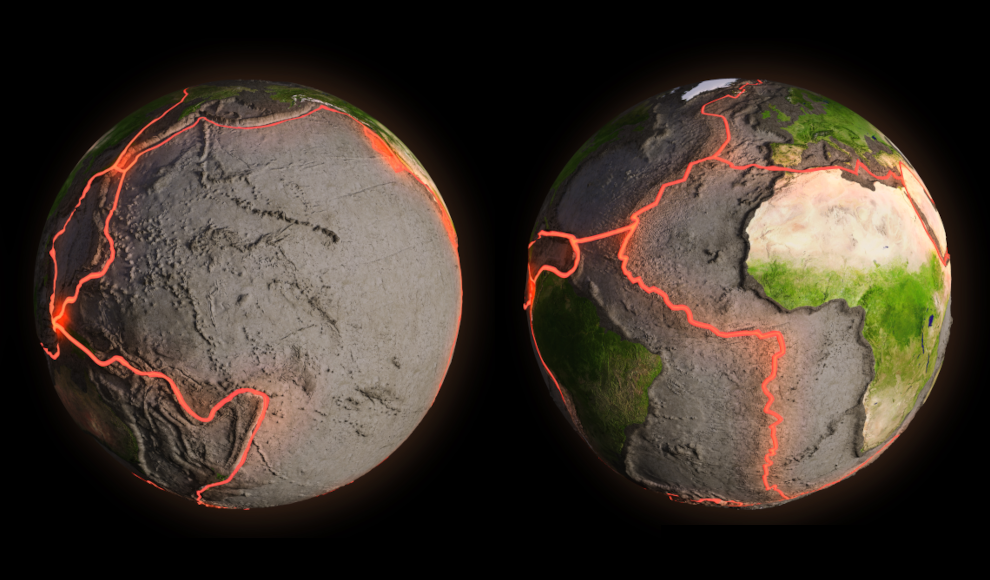A recent study by researchers from Sorbonne Université and the University of Sydney has discovered a 36-million-year cycle of plate tectonics that has led to significant fluctuations in sea levels on Earth. These cycles have greatly influenced the shaping of biodiversity and evolution over millions of years. The researchers used the GPlates-Plate Tectonics software to reconstruct the interplay between plate tectonics and sea level fluctuations over the last 250 million years. They found that as sea levels rise and fall, the habitats in continental shelves and shallow seas expand and contract, providing opportunities for some organisms to thrive while others die off. The study provides evidence that plate tectonics indirectly influenced biodiversity significantly.
The 36-million-year cycle of plate tectonics is characterized by a shift between faster and slower seafloor spreading, leading to cyclic changes in ocean basin depths and tectonic water displacement into the deep layers of the Earth. These changes have resulted in fluctuations in flooding and drying of continents, with extended periods of shallow seas promoting biodiversity. The study challenges previous assumptions about why species have changed over long periods, providing a new understanding of the role of plate tectonics and global sea level rise in shaping biodiversity and evolution.
The study also highlights the impact of sea level fluctuations on ecosystems, as seen in the Winton Formation in Queensland, Australia. The formation, known for its collection of dinosaur fossils and precious opal, offers a valuable insight into a time when a large part of the Australian continent was flooded. As sea levels rose and fell, the flooding of the continent created expanding and contracting ecological niches in shallow seas, providing unique habitats for a variety of species. The Winton Formation serves as a testament to the profound effects of sea level fluctuations and captures a moment in time when the landscape of Australia was transformed, and fascinating creatures roamed the land.










